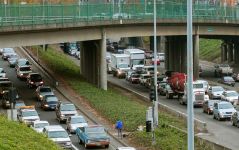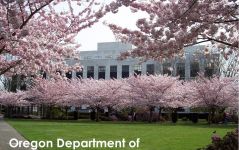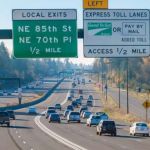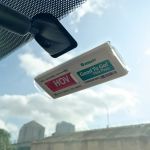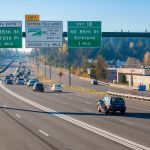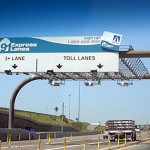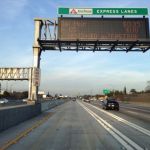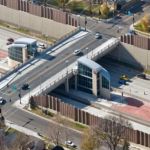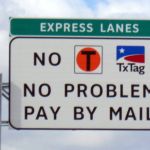Your input is essential
We’re learning how congestion pricing can work for the Portland region. Since ODOT began this phase of congestion pricing analysis in 2017, staff has conducted extensive public outreach, including open houses and an online survey that generated thousands of comments in January and February 2018.
This online open house provides information from the technical analysis and gathers feedback on five congestion pricing concepts. Participants can also share their thoughts on ways to broaden benefits for our unique region. After 2018, ODOT and the OTC will conduct additional public input and technical analysis.
The Oregon Transportation Commission (OTC) is the pricing authority in Oregon. The OTC will use the feasibility analysis to develop a proposal for value pricing for the Federal Highway Administration in late 2018.
Many details about congestion pricing, including the locations and prices of tolls, are yet to be determined.
To learn more, select a station below or click the buttons at the top of the page.
Stations
How does it work?
Congestion pricing works by placing a cost on the use of the highway during rush hour and other periods of heavy traffic, allowing people to choose between paying a fee for faster highway travel, or choosing to take their trip at a different time with a lower fee, carpool, travel using a different mode of transportation, take a different route, or not make the trip at all.
![]() No toll booths: Congestion pricing would not require people to stop at toll booths. Technology that identifies cars with transponders or reads license plates in a manner that does not compromise privacy would allow drivers to pay tolls without slowing or stopping.
No toll booths: Congestion pricing would not require people to stop at toll booths. Technology that identifies cars with transponders or reads license plates in a manner that does not compromise privacy would allow drivers to pay tolls without slowing or stopping.
![]() Variable rates: The cost of the toll will vary depending on how much traffic is on the highway. During periods of high traffic, the toll will go up. When traffic is light, the toll will go down.
Variable rates: The cost of the toll will vary depending on how much traffic is on the highway. During periods of high traffic, the toll will go up. When traffic is light, the toll will go down.
![]() Better travel options when you need it: Congestion pricing will give people the choice for a faster highway trip when they really need it—like when they need to get to work, a medical appointment, or pick up their child from school or daycare. Pricing is typically combined with transit improvements to provide additional travel choices.
Better travel options when you need it: Congestion pricing will give people the choice for a faster highway trip when they really need it—like when they need to get to work, a medical appointment, or pick up their child from school or daycare. Pricing is typically combined with transit improvements to provide additional travel choices.
![]() The primary goal is to improve travel: Any funds raised from tolling will go first to pay for implementing the tolling system. If there is additional revenue left over, it must be used for roadway improvements, as mandated by Oregon state law.
The primary goal is to improve travel: Any funds raised from tolling will go first to pay for implementing the tolling system. If there is additional revenue left over, it must be used for roadway improvements, as mandated by Oregon state law.
 Effective: Numerous examples from the U.S and around the world show congestion pricing can work to improve traffic conditions. Seattle drivers saved an average of 26 minutes every day in 2016 with their express toll lanes on I-405
Effective: Numerous examples from the U.S and around the world show congestion pricing can work to improve traffic conditions. Seattle drivers saved an average of 26 minutes every day in 2016 with their express toll lanes on I-405
Over the past several months, the community has identified concerns and potential solutions, including:
-
Design the project to minimize the impact on people of low income or otherwise disadvantaged
-
Set performance measures to ensure traffic congestion is reduced
-
Minimize traffic diversion to local streets
-
Make the pricing system easy to understand and use
-
Provide alternative driving routes
-
Provide more transit, bike and walking options
-
Make sure revenue is used fairly
The Portland Metro area is known for finding unique solutions to urban and regional issues. Tailored policies can address challenges and better distribute the benefits of congestion pricing. See the gallery for some example policies used elsewhere in the U.S., or download the PDF.
Let us know what you think
What strategies, policies or decisions should be considered to make congestion pricing work for the Portland metro area?Schedule
A region-wide public conversation about value pricing will continue throughout 2018. The five concepts for congestion pricing will be further analyzed for how they would work for the Portland metro area. The Oregon Transportation Commission will submit a report and proposal to the federal government by the end of 2018 for review.
Timline of Congestion Pricing

Opportunities to speak one-on-one with project staff and ask questions are available at four open house events in April 2018. These drop-in events will share the same information as this online open house, but in an in-person setting.
Thursday, April 12
5:30 - 7:30 pm
Museum of Oregon Territory
211 Tumwater Drive, Oregon City
Saturday, April 14, 10 am - 12 pm
Ron Russell Middle School - Commons
3955 SE 112th Avenue, Portland
Wednesday, April 18, 5:30 - 7:30 pm
Tigard Public Works - Auditorium
8777 SW Burnham Street, Tigard
Saturday, April 21, 9:30 am - 12:30 pm
Embassy Suites Airport - Pine Room
7900 NE 82nd Avenue, Portland
Monday, April 30, 5:30 - 7:30 pm
Marshall Community Center/Leupke Center
1009 E McLoughlin Blvd.
Policy Advisory Committee
To help make sure that a variety of perspecties are represented in the final proposal, the Oregon Transportation Commission established a Value Pricing Policy Advisory Committee to guide ODOT through the Value Pricing Feasibility Analysis. This committee consists of more than 20 representatives from local governments from Oregon and Washington, environmental, business, social justice and equity advocates, and other highway users. Meeting dates and materials are posted online.
Stay informed and make your voice heard
Continued public review and input on value pricing is essential to help us fully evaluate congestion pricing and determine how best to implement it.
More information is available on the project website.


